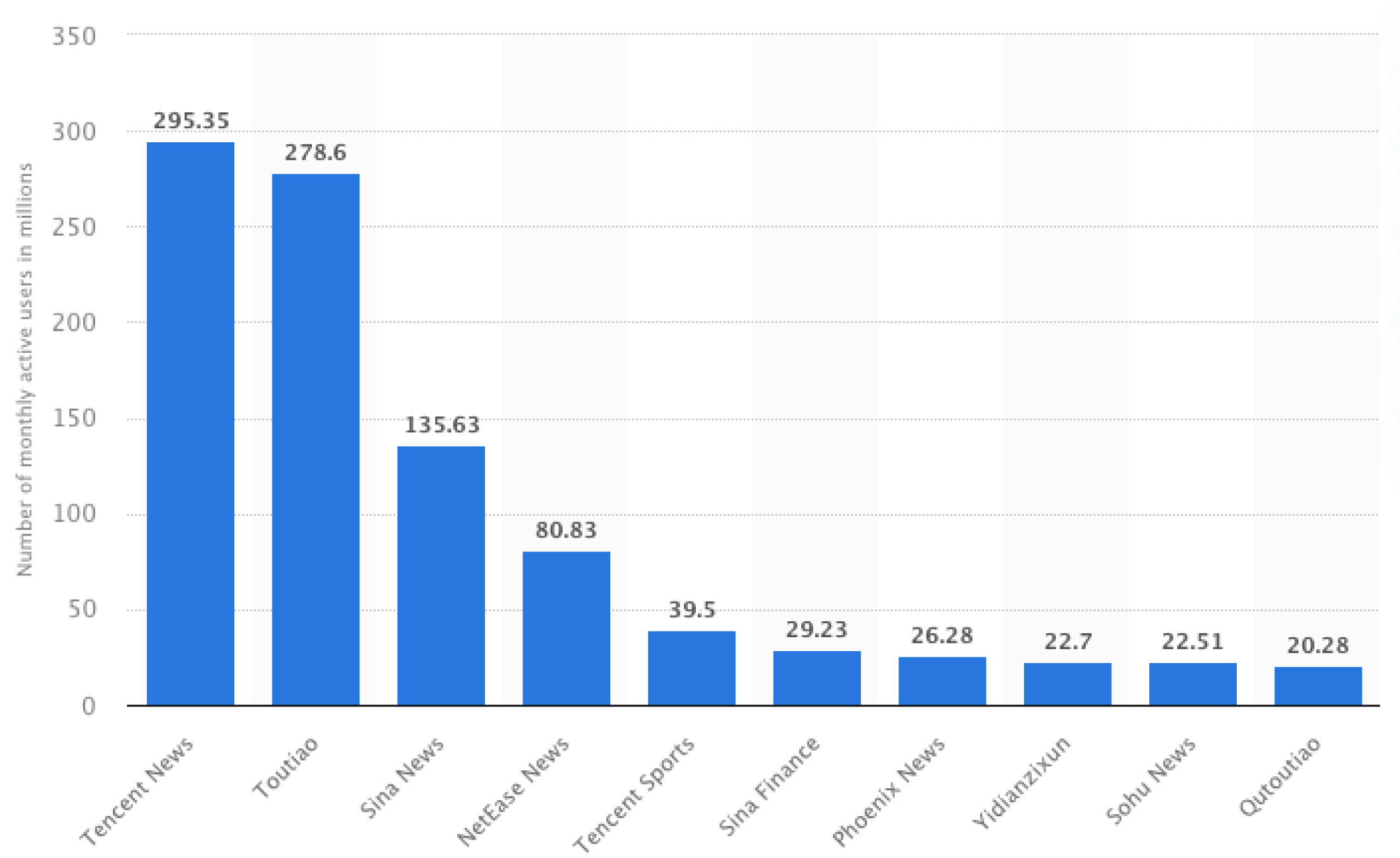News aggregation platforms are services that pull together online content such as news and videos in one place for ease of viewing on mobile devices or websites.
- information dissemination
- information push
- mainstream value information
- governance
- journalism
1. Introduction
Currently, news aggregation platforms have become the primary way for users to obtain information. In China, the news aggregation platforms represented by Toutiao and Tencent News rely on big data technology and recommendation algorithms to increase user stickiness by meeting the personalized needs of users, making them to gradually become media platforms with strong competitiveness. At the end of 2020, the news aggregation platform has more than 600 million active monthly users, and the penetration rate of the entire network is close to 80%. Among them, top platforms such as Toutiao and Tencent News maintain their dominant positions and can reach levels of billions MAU (Figure 1). The most significant advantages of news aggregation platforms are that they are able to achieve precise matches between users and information. Combined with the overwhelming advantage of current news aggregation platforms in the information dissemination process, these platforms determine the meaning of information, the flow of information, and the audience’s response to a certain extent. The function of information is to provide a basis for personal decision-making and judgment. Therefore, news aggregation platforms have a profound impact on user value judgments and daily behavior decisions.

Figure 1. Number of monthly active users (MAU) of leading news aggregation platforms in China in December 2020 [1].
2. Intelligent Recommendation Technology of News Aggregation Platforms
References
- Number of Monthly Active Users (MAU) of the Leading News Apps in China in December 2020. Available online: Https://www.Statista.Com/Statistics/910787/China-Monthly-Active-Users-on-Leading-News-Apps (accessed on 15 July 2021).
- Javed, U.; Shaukat, K.; Hameed, I.A.; Iqbal, F.; Alam, T.M.; Luo, S. A Review of Content-Based and Context-Based Recommendation Systems. Int. J. Emerg. Technol. Learn. 2021, 16, 274–306.
- Gossart, C. Can digital technologies threaten democracy by creating information cocoons? In Transforming Politics and Policy in the Digital Age; IGI Global: Hershey, PA, USA, 2014; pp. 145–154.
- Zuiderveen Borgesius, F.; Trilling, D.; Möller, J.; Bodó, B.; De Vreese, C.H.; Helberger, N. Should We Worry about Filter Bubbles? Internet Policy Rev. J. Internet Regul. 2016, 5, 1.
